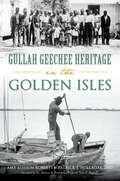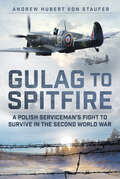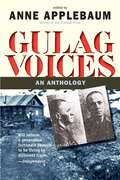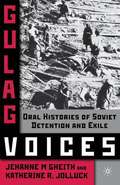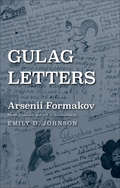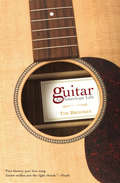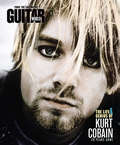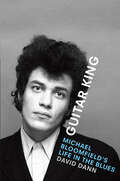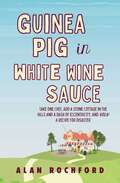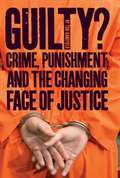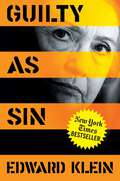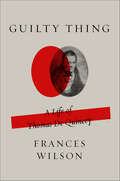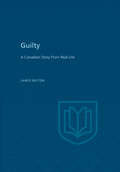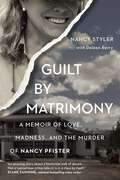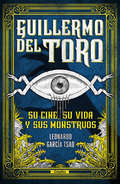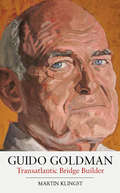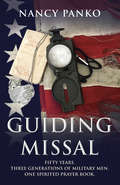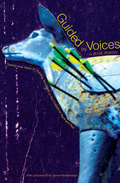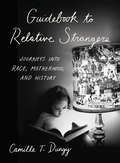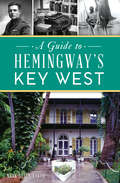- Table View
- List View
Gullah Geechee Heritage in the Golden Isles (American Heritage)
by Amy Lotson Roberts Patrick J. Holladay PhDThe Golden Isles are home to a long and proud African American and Gullah Geechee heritage. Ibo Landing was the site of a mass suicide in protest of slavery, the slave ship Wanderer landed on Jekyll Island and, thanks to preservation efforts, the Historic Harrington School still stands on St. Simons Island. From the Selden Normal and Industrial Institute to the tabby cabins of Hamilton Plantation, authors Amy Roberts and Patrick Holladay explore the rich history of the region's islands and their people, including such local notables as Deaconess Alexander, Jim Brown, Neptune Small, Hazel Floyd and the Georgia Sea Island Singers.
Gulag to Spitfire: A Polish Serviceman's Fight to Survive in the Second World War
by Andrew Hubert von StauferStalin is quoted as saying 'One man's death is a tragedy, a thousand deaths is a statistic'. This is the story of a man who was determined to be neither. Kazimierz Tomasz 'Tomek' Hubert was 17 when the Germans invaded Poland in September 1939. Despite his young age, he was quickly deported to the Vorkuta Gulag in the Arctic Circle, for the crime of being the son of a military governor. Here he would survive torture, starvation and even the threat of cannibalism, before he managed to escape and set off on a 6,000km walk to freedom. In this moving tale of endurance against all odds, Andrew Hubert von Staufer traces his father's footsteps from the gulags of Siberia to flying Spitfires in air battles against the Luftwaffe. This is a remarkable account of the Second World War and its long-reaching impact.
Gulag Voices: An Anthology (Annals of Communism Series)
by Anne ApplebaumA unique anthology of Gulag memoirs, edited and annotated by Pulitzer Prize–winning author Anne Applebaum Anne Applebaum wields her considerable knowledge of a dark chapter in human history and presents a collection of the writings of survivors of the Gulag, the Soviet concentration camps. Although the opening of the Soviet archives to scholars has made it possible to write the history of this notorious concentration camp system, documents tell only one side of the story. Gulag Voices now fills in the other half.The backgrounds of the writers reflect the extraordinary diversity of the Gulag itself. Here are the personal stories of such figures as Dmitri Likhachev, a renowned literary scholar; Anatoly Marchenko, the son of illiterate laborers; and Alexander Dolgun, an American citizen. These remembrances—many of them appearing in English for the first time, each chosen for both literary and historical value—collectively spotlight the strange moral universe of the camps, as well as the relationships that prisoners had with one another, with their guards, and with professional criminals who lived beside them.A vital addition to the literature of this era,annotated for a generation that no longer remembers the Soviet Union, Gulag Voices will inform, interest, and inspire, offering a source for reflection on human nature itself.
Gulag Voices
by Jehanne M Gheith Katherine R. JolluckIn this volume, the powerful voices of Gulag survivors become accessible to English-speaking audiences for the first time through oral histories, rather than written memoirs. It brings together interviews with men and women, members of the working class and intelligentsia, people who live in the major cities and those from the "provinces," and from an array of corrective hard labor camps and prisons across the former Soviet Union. Its aims are threefold: 1) to give a sense of the range of the Gulag experience and its consequences for Russian society; 2) to make the Gulag relevant to English-speaking readers by offering comparisons to historical catastrophes they are likely to know more about, such as the Holocaust; and 3) to discuss issues of oral history and memory in the cultural context of Soviet and post-Soviet society.
Gulag Letters
by Arsenii Formakov Emily D. JohnsonA poignant collection of letters written by the Latvian poet, novelist, and newspaper editor Arsenii Formakov while interned in Soviet labor camps Emily Johnson has translated and edited a fascinating collection of letters written by Arsenii Formakov, a Latvian Russian poet, novelist, and journalist, during two terms in Soviet labor camps, 1940 to 1947 in Kraslag and 1949 to 1955 in Kamyshlag and Ozerlag. This correspondence, which Formakov mailed home to his family in Riga, provides readers with a firsthand account of the workings of the Soviet penal system and testifies to the hardships of daily life for Latvian prisoners in the Gulag.
Gujarat na Sirchatra Sardar
by Mukulbhai Kalarthi“તમે તમારું સાચું અને મજબૂત સંગઠન ખડું કરો. ઉપરાંત મેં જે નબળાઈઓ ચીંધી છે તે દૂર કરો, આળસ છોડી દો, વહેમો ફગાવી દો, કોઈનો ડર ન રાખો, કુસંપનો ત્યાગ કરો, કાયરતા ખંખેરી નાખો, હિંમત રાખો, બહાદુર બનો અને આત્મવિશ્વાસ રાખતાં શીખો.” “આટલું કરશો તો તમે જે ઇચ્છો છો તે એની મેળે આવી મળશે. જગમાં જેને માટે જે લાયક હોય છે તેને મળે જ છે. આપણી ઉમેદ મોટી છે. આપણે ગુલામીની બેડીઓ તોડી, સ્વતંત્રતા મેળવી રાજસત્તાની લગામ આપણા હાથમાં લેવા માગીએ છીએ. આવી મોટી ઉમેદ રાખવાનો આપણો અધિકાર છે. આવો મોટો અધિકાર પ્રાપ્ત કરવા માટે આપણે ભગીરથ પ્રયત્ન કરવો જોઈએ. પ્રયત્ન કરનારને પ્રભુ મદદ કરે છે. પ્રભુ તમારું ભલું કરો!”
Guitar: An American Life
by Tim BrookesFrom humble folk instrument to American icon, the story of the guitar is told in this “exceptionally well-written” memoir by the NPR commentator (Guitar Player). In this blend of personal memoir and cultural history, National Public Radio commentator Tim Brookes narrates the long and winding history of the guitar in the United States as he recounts his own quest to build the perfect instrument. Pairing up with a master artisan from the Green Mountains of Vermont, Brookes learns how a perfect piece of cherry wood is hued, dovetailed, and worked on with saws, rasps, and files. He also discovers how the guitar first arrived in America with the conquistadors before being taken up by an extraordinary variety of hands: miners and society ladies, lumberjacks and presidents’ wives. In time, the guitar became America’s vehicle of self-expression. Nearly every immigrant group has appropriated it to tell their story. “Part history, part love song, Guitar strikes just the right chords.” —Andrew Abrahams, People
Guitar World The Life & Genius of Kurt Cobain
by Editors of Guitar WorldKurt Cobain--rock visionary, godfather of grunge, voice of the disaffected--was also a powerful and influential guitarist. From the editors of Guitar World, the #1 guitar magazine, The Life and Genius of Kurt Cobain examines his impact on American music--and why a man who had everything came to the terrible conclusion that he had nothing. Collected here are the stories and interviews exclusively published by Guitar World, chronicling Cobain's dramatic ascent on the Seattle music scene, the making of Nirvana's albums, Cobain's personal demons, and his far-reaching legacy.
Guitar King: Michael Bloomfield's Life in the Blues
by David DannA Rolling Stone Best Music Book of 2019, this biography of blues-rock legend Mike Bloomfield &“draws you in the way a novel does&” (The Wall Street Journal). Named one of the world&’s great blues-rock guitarists by Rolling Stone, Mike Bloomfield remains beloved by fans forty years after his untimely death. Taking readers backstage, onstage, and into the recording studio with this legendary virtuoso, David Dann tells the riveting stories behind Bloomfield&’s work in the seminal Paul Butterfield Blues Band and the mesmerizing Electric Flag, as well as on the Super Session album with Al Kooper and Stephen Stills, Bob Dylan&’s Highway 61 Revisited, and soundtrack work with Peter Fonda and Jack Nicholson. Drawing from meticulous research, including more than seventy interviews with the musician&’s friends, relatives, and band members, music historian David Dann brings to life Bloomfield&’s worlds, from his struggles to fit in on Chicago&’s wealthy North Shore with his Jewish family to the gritty taverns and raucous nightclubs where this self-taught guitarist helped transform the sound of contemporary blues and rock music. With scenes that are as electrifying as Bloomfield&’s solos, this is the story of a life lived at full volume. &“Feels like one of the last great untold classic-rock tales, right up through Bloomfield&’s mysterious passing.&” ―Rolling Stone &“Reveals the depths of Bloomfield's musical passions, genius and personal despair . . . Guitar King establishes his pivotal role in American music history.&” ―Pittsburgh Post-Gazette
Guitar King: Michael Bloomfield's Life in the Blues
by David DannA Rolling Stone Best Music Book of 2019, this biography of blues-rock legend Mike Bloomfield &“draws you in the way a novel does&” (The Wall Street Journal). Named one of the world&’s great blues-rock guitarists by Rolling Stone, Mike Bloomfield remains beloved by fans forty years after his untimely death. Taking readers backstage, onstage, and into the recording studio with this legendary virtuoso, David Dann tells the riveting stories behind Bloomfield&’s work in the seminal Paul Butterfield Blues Band and the mesmerizing Electric Flag, as well as on the Super Session album with Al Kooper and Stephen Stills, Bob Dylan&’s Highway 61 Revisited, and soundtrack work with Peter Fonda and Jack Nicholson. Drawing from meticulous research, including more than seventy interviews with the musician&’s friends, relatives, and band members, music historian David Dann brings to life Bloomfield&’s worlds, from his struggles to fit in on Chicago&’s wealthy North Shore with his Jewish family to the gritty taverns and raucous nightclubs where this self-taught guitarist helped transform the sound of contemporary blues and rock music. With scenes that are as electrifying as Bloomfield&’s solos, this is the story of a life lived at full volume. &“Feels like one of the last great untold classic-rock tales, right up through Bloomfield&’s mysterious passing.&” ―Rolling Stone &“Reveals the depths of Bloomfield's musical passions, genius and personal despair . . . Guitar King establishes his pivotal role in American music history.&” ―Pittsburgh Post-Gazette
Guinea Pig in White Wine Sauce
by Alan RochfordAlan Rochford was living the dream when he started Stone Cottage, an idyllic French restaurant nestled in the Adelaide Hills. He had everything going for him apart from experience, money, and the first idea about what he was doing. After two years and one divorce, he began to see the funny side, fed on an endless diet of characters and occurrences so crazy that you couldn’t make them up.Australia’s answer to Basil Fawlty, Alan serves up a degustation of lip-smacking anecdotes, from his side-line in snail trading across the French countryside, to the time two customers got a touch too ‘intimate’ in the middle of his dining room.Guinea Pig in White Wine Sauce is the tale of one man trying to keep his head in the certifiably insane world of fine dining.
Guinea Pig in White Wine Sauce
by Alan RochfordAlan Rochford was living the dream when he started Stone Cottage, an idyllic French restaurant nestled in the Adelaide Hills. He had everything going for him apart from experience, money, and the first idea about what he was doing. After two years and one divorce, he began to see the funny side, fed on an endless diet of characters and occurrences so crazy that you couldn&’t make them up.Australia&’s answer to Basil Fawlty, Alan serves up a degustation of lip-smacking anecdotes, from his side-line in snail trading across the French countryside, to the time two customers got a touch too &‘intimate&’ in the middle of his dining room.Guinea Pig in White Wine Sauce is the tale of one man trying to keep his head in the certifiably insane world of fine dining.
Guilty?
by Teri Kanefield"An extraordinary book . . . that could well be mind-blowing to the thoughtful young reader who is ready to move beyond the black-and-white notion that a particular act is wrong simply because it is illegal." --Richie Partington When does strategy become cheating? Can good luck be theft? Is killing always a crime? Real-world cases show there are often no clear-cut answers in this fascinating look at the ever-evolving world of law and order, and crime and punishment. When some people kill, they are jailed or even executed. When others do, they are celebrated as heroes. Though this example is extreme, it's just one of many that author and lawyer Teri Kanefield explores in depth. From an examination of what constitutes a crime, why and how we punish people who commit crimes, how the government determines these rules, to how citizens have reacted when they feel laws aren't fair, this book will challenge young readers' thinking about law and order, crime and punishment, while giving them specific legal cases to ponder along the way. For ages 12 and up, this examination of the legal system will also include historical photography to help bring each legal case to life.
Guilty as Sin: Uncovering New Evidence of Corruption and How Hillary Clinton and the Democrats Derailed the FBI Investigation
by Edward KleinA New York Times Bestseller!When FBI Director James Comey announced in July that Hillary Clinton would not be indicted for mishandling classified information, America was stunned. Had the scandal-happy Clintons escaped justice once again? Not so fast, says investigative reporter and bestselling author Ed Klein. There is far more behind Comey's shocking press conference than meets the eye -- and a minefield of email evidence between Hillary and the White House.In his astonishing new book, Klein uncovers the real story behind Hillary's email scandals and the dirty political games that have kept her one step ahead of the law - for now. Klein reveals what the FBI's team of 150+ investigators really found on Clinton's server. How Comey originally threatened to resign over White House attempts to intervene in the investigation, and his secret plan to go around the Justice Department if needed. How an unprecedented Congressional investigation during an election year is uncovering new shocking evidence of corruption on a level some would call treason. And what Bill and Hillary still have left in their bag of tricks in their desperate quest to get back into the Oval Office.
Guilty Thing: A Life of Thomas De Quincey
by Frances WilsonNational Book Critics Circle Award, Biographers International Organization Plutarch Award and Los Angeles Times Book Prize FinalistNew York Times Book Review, Times Literary Supplement and The Guardian Best Books of 2016Thomas De Quincey was an obsessive. He was obsessed with Wordsworth and Coleridge, whose Lyrical Ballads provided the script to his life, and by the idea of sudden death. Running away from school to pursue the two poets, De Quincey insinuated himself into their world. Basing his sensibility on Wordsworth’s and his character on Coleridge’s, he forged a triangle of unusual psychological complexity.Aged twenty-four, De Quincey replaced Wordsworth as the tenant of Dove Cottage, the poet’s former residence in Grasmere. In this idyllic spot he followed the reports of the notorious Ratcliffe Highway murders of 1811, when two families, including a baby, were butchered in their own homes. In his opium-soaked imagination the murderer became a poet while the poet became a murderer. Embedded in On Murder as One of the Fine Arts, De Quincey’s brilliant series of essays, Frances Wilson finds the startling story of his relationships with Wordsworth and Coleridge.Opium was the making of De Quincey, allowing him to dissolve self-conflict, eliminate self-recrimination, and divest himself of guilt. Opium also allowed him to write, and under the pseudonym “The Opium-Eater” De Quincey emerged as the strangest and most original journalist of his age. His influence has been considerable. Poe became his double; Dostoevsky went into exile with Confessions of an English Opium-Eater in his pocket; and Charles Dickens, Oscar Wilde, George Orwell, Alfred Hitchcock, and Vladimir Nabokov were all De Quincey devotees. There have been other biographies of Thomas De Quincey, but Guilty Thing is the first to be animated by the spirit of De Quincey himself. Following the growth of his obsessions from seed to full flowering and tracing the ways they intertwined, Frances Wilson finds the master key to De Quincey’s vast Piranesian mind. Unraveling a tale of hero worship and revenge, Guilty Thing brings the last of the Romantics roaring back to life and firmly establishes Wilson as one of our foremost contemporary biographers.
Guilty
by Douglas Lochhead Lance BiltonThis is a reproduction of a book published before 1923. A Canadian story from real life. It is part of the Toronto reprint library of Canadian prose and poetry series.
Guilt by Matrimony: A Memoir of Love, Madness, and the Murder of Nancy Pfister
by Daleen Berry Nancy StylerIn February 2014, Aspen socialite Nancy Pfister was murdered in her own home—brutally bludgeoned, wrapped in a sheet, and stuffed inside a locked closet. The question was: Who did it? Fewer than twelve hours after her body was found and without any evidence, police decided a married couple from Denver had killed her. Within a few days, they arrested and charged Nancy Styler, a friend of Pfister's who'd had a falling out with her after a business deal went sour, and Dr. Trey Styler, Nancy's disabled husband, who recently lost the family home, his medical practice, and any hope of a peaceful retirement for himself and his wife. Eleven days later, police also arrested and charged Kathy Carpenter, Pfister's underpaid and overworked personal assistant and closest friend. Months later, Trey Styler, who was slowly losing his grip on reality as he battled with mental illness, confessed to the crime. Rampant speculation spread about whether he was involved at all—or if his confession was that of a man on his deathbed—because a medical condition appeared to have left him barely able to walk, much less carry out such a heinous crime. In Guilt by Matrimony, Styler's widow, Nancy, reveals the answers to the biggest mysteries of this case and recounts the trauma of being falsely accused and imprisoned for a first-degree murder she had no knowledge of. And, in the only interview before his death, Trey gives his account of that fateful day. New York Times bestselling author Daleen Berry covers this compelling story from the inside, following the Stylers from their fairy-tale life in Denver to the morning of their simultaneous arrest to Nancy's release from jail and her attempts to rebuild her shattered life. Filled with details from exclusive interviews, a close look at the botched small-town police work, and first-person accounts of what really happened, Guilt by Matrimony is the definitive look at a shocking murder that rocked Aspen.
Guillermo del Toro: Su cine, su vida y sus monstruos
by Leonardo García Tsao«La obra singular de Guillermo del Toro lo ha convertido en un cineasta clave de fin del siglo pasado y principios del presente.» -del prólogo de Felipe Cazals En una amena conversación informal junto a su amigo Leonardo García Tsao, crítico de cine con una larga trayectoria , Guillermo del Toro recorre en estas páginas sus tempranas influencias, sus inquietudes infantiles y sus primeras aventuras creativas en Guadalajara; una historia de pasión juvenil que da paso a una de las carreras cinematográficas más celebradas de nuestro tiempo. Desde la odisea que significó la filmación del cortometraje Doña Lupe, para la que él mismo tuvo que conducir, cargar y descargar el camión con el equipo de filmación, hasta la universal celebración de su más reciente filme, La forma del agua, somos testigos de la lucha, los obstáculos, las alegrías y los obsesivos métodos de trabajo que hacen de Guillermo del Toro una de las mentes más singularmente auténticas del cine internacional, y somos recompensados con las pistas definitivas que unifican el imaginario de su universo fílmico.
Guillermo Tell
by Friedrich SchillerEl héroe suizo Guillermo Tell es el protagonista de este título de Friedrich Von Schiller, el más popular del autor alemán. Tell reside con su familia en Burglen, su lucha por la emancipación de su país se plantea en este relato, que ejemplifica con las acciones y personajes el espíritu libertario del ser humano.
Guido Goldman: Transatlantic Bridge Builder
by Martin KlingstThe son of Nahum Goldmann, who was the founder of the World Jewish Congress, Guido Goldman was one of the most distinguished protagonists of the reintegration of Germany into the international community after the defeat of Nazism in 1945. Later he helped establish the German Marshall Fund and created Harvard University’s Center for European Studies as one of the pre-eminent research institutes and meeting places in the world for scholars, graduate students, prominent politicians, and artists. His large network of friends and interlocutors included Willy Brandt and Helmut Kohl, Henry Kissinger and Ronald Reagan, Harry Belafonte and Marlene Dietrich. His generous philanthropy extended to the preservation of non-Western cultures threatened by extinction, such as the IKAT project through which he revived the unique ancient textile arts of Central Asia. All this comes alive in Martin Klingst’s careful reconstruction of Goldman's life.
Guiding Missal: Fifty Years. Three Generations of Military Men. One Spirited Prayer Book.
by Nancy PankoIn 1944, a U.S. Army baker volunteers as a forward observer to carry out covert operations behind German lines in World War II. In the early 1960s, a focused nineteen-year-old Airman is responsible for decoding critical top secret messages during the height of the Berlin Crisis. In 1993, an army sniper overcomes a debilitating condition only to fight for survival in the streets of war-torn Mogadishu, Somalia, when a Blackhawk helicopter is shot down. When each of these men face a crisis, this very special prayer book, My Military Missal, provides the comfort and encouragement of divine power. Based on actual events, Guiding Missal’s timeless journey of faith, patriotism and miracles will touch your heart as the missal and the men call out to God for guidance, protection, and a safe return home.
Guiding Lights: The People Who Lead Us Toward Our Purpose in Life
by Erick LiuAs Liu shares his own journey of discovery, he asks the reader to observe who is teaching the reader and whom the reader is teaching. Teaching, Liu believes, is the core of our humanity, and in this book he, through prose that often flows like poetry, explores that influence.
Guided by Voices: A Brief History
by James GreerThe true story of the fourth-grade teacher in Dayton, Ohio, who created one of the most influential bands of our times. Devoted fans have followed Guided by Voices for decades—and critics around the world have lauded the band’s brain trust, Robert Pollard, as a once-in-a-generation artist. Pollard has been compared by the New York Times to Mozart, Rossini, and Paul McCartney (in the same sentence) and everyone from P. J. Harvey, Radiohead, R.E.M., the Strokes, and U2 has sung his praises and cited his music as an influence. But it all started rather prosaically when Pollard, a fourth-grade teacher in his early thirties, began recording songs with drinking buddies in his basement. In this book, James Greer, an acclaimed music writer and former Spin editor—who also played in the band for two years—provides unparalleled insight and complete access to the workings of Pollard’s muse.
Guidebook to Relative Strangers: Journeys Into Race, Motherhood, And History
by Camille T. DungyA National Book Critics Circle Award Finalist A 2018 Colorado Book Award Finalist As a working mother and poet-lecturer, Camille Dungy’s livelihood depended on travel. She crisscrossed America and beyond with her daughter in tow, history shadowing their steps, always intensely aware of how they were perceived, not just as mother and child but as black women. From the San Francisco of settlers’ dreams to the slave-trading ports of Ghana, from snow-white Maine to a festive yet threatening bonfire in the Virginia pinewoods, Dungy finds fear and trauma but also mercy, kindness, and community. Penetrating and generous, this is an essential guide for a troubled land.
Guide to Hemingway’s Key West, A
by Mark Allen BakerSee the Conch Republic through Hemingway's eyes.
